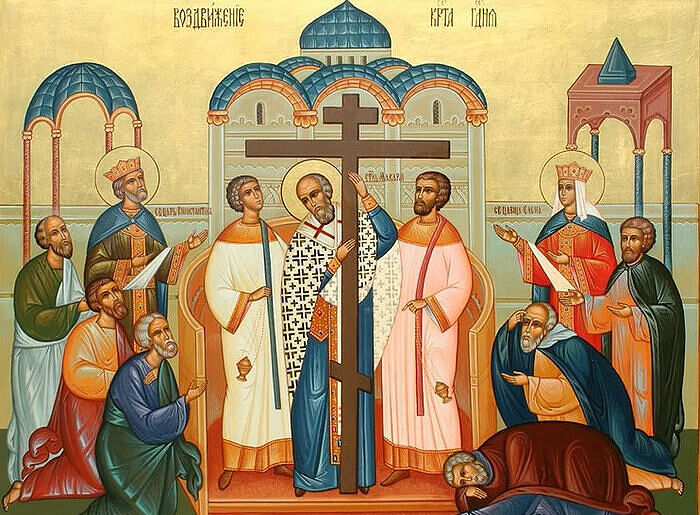
History of the Feast
In the first centuries of Christianity, during the years of persecution, the pagans wished to destroy all evidence of the life of Jesus Christ, and the Cross on which He was crucified disappeared. With the conversion of Emperor Constantine the Great, Christians were at liberty to worship openly and build churches. The emperor’s mother, St. Helen, longed to find the True Cross of Christ. She traveled to Jerusalem and was told by a very old Jew that the Cross was buried beneath the temple of the pagan goddess Venus, built in 119 AD by the Roman Emperor Hadrian.
The temple was torn down, and digging in the earth below uncovered three wooden crosses. The small board which had hung over Christ with the inscription ‘ Jesus King of the Jews,’ had long since fallen off, and -there was no way of telling which was the True Cross and which were the crosses of the two thieves crucified on either side of Christ. A sick woman was brought and likewise a dead man who was being carried to burial. The three crosses were laid in turn one by one upon the sick woman and upon the dead man. Two of the crosses had no effect, but through contact with the third cross, the sick woman was healed of her infirmity and the dead man came to life. These miracles clearly indicated which of the three was Christ’s Cross.
Hearing of this discovery, all the faithful desired to see the Cross of the Lord and to venerate it. The Patriarch of Jerusalem, Makarios, took the Cross onto a raised platform and lifted it on high, ‘exalting’ it, for all to see. The people fell to their knees, bowing down before the Cross and crying out repeatedly: “Lord, have mercy!”
To house the relic of the True Cross, St. Helen had s church built over the Holy Sepulchre. The church was consecrated on Sept. 13, 335, an event also commemorated in the service hymns of the Feast. The finding and exaltation of the Cross was appointed to be celebrated annually on the following day.
https://orthochristian.com/64407.html



